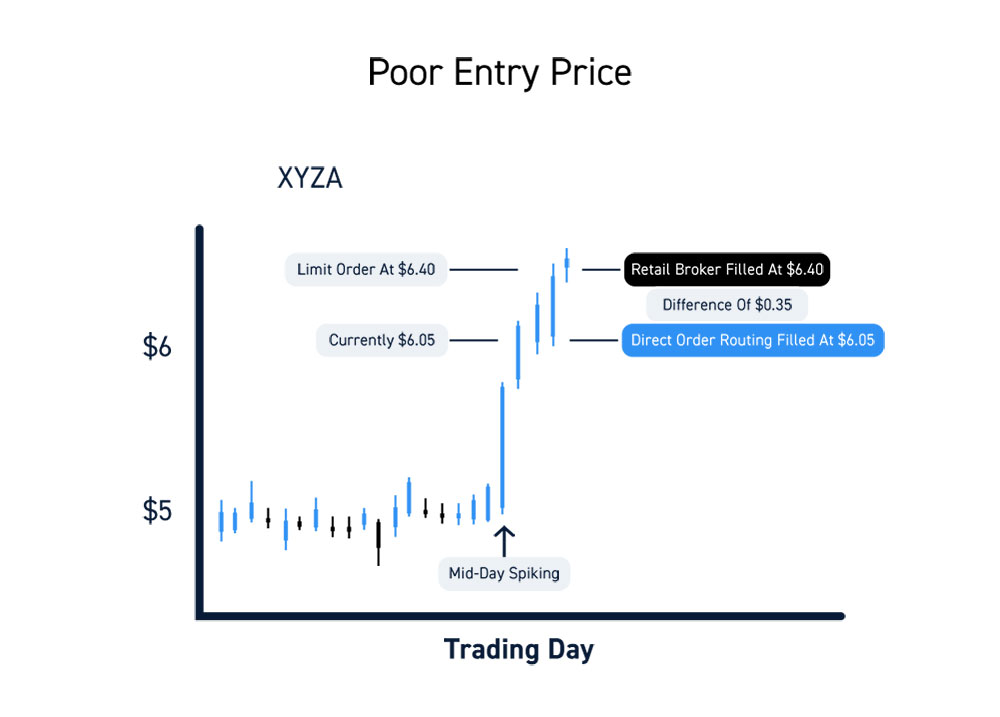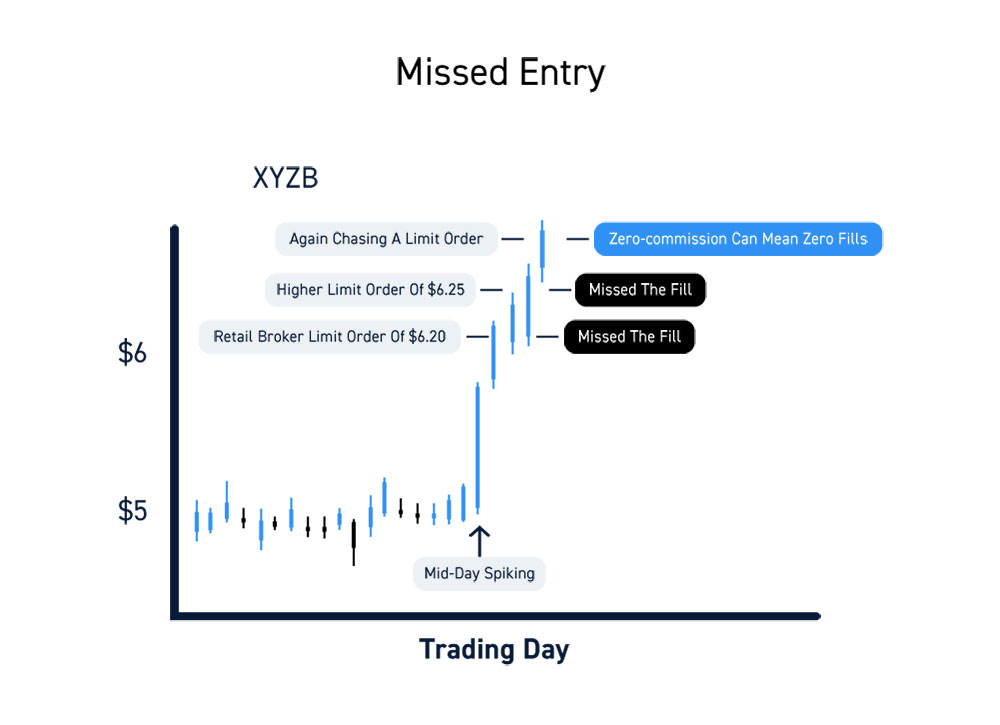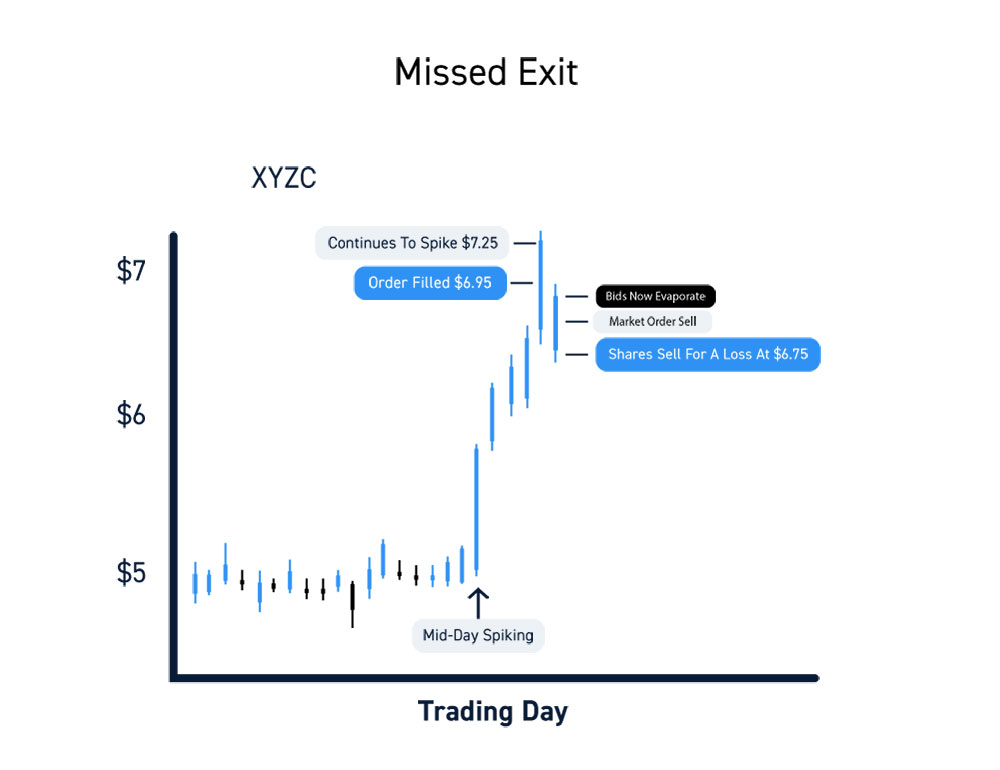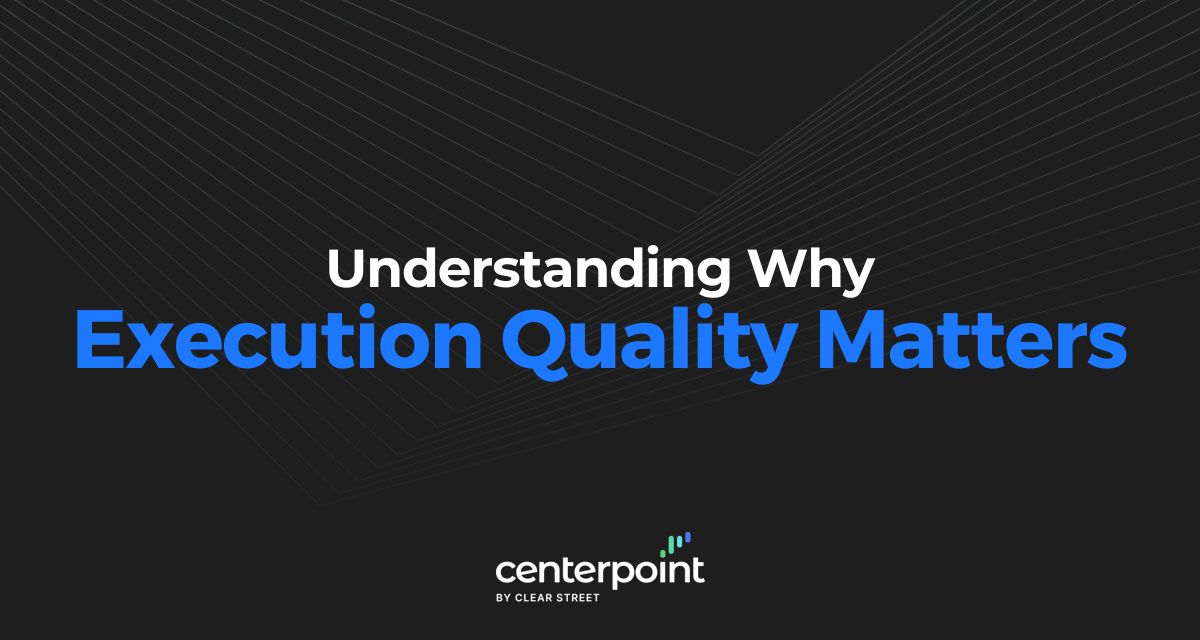It’s easy to assume that you are getting quality executions when buying and selling stocks. All retail brokers will claim “great executions” in their marketing material. The wave of zero-commission brokers imply all the bells-and-whistles in addition to quality executions are waiting for you. However, the executions may only be “great” for your broker. It’s prudent to understand precisely why order execution quality matters.
What is an Order Execution?
Anytime you place an order to buy or sell stock through your broker’s platform or mobile app, it goes through a series of steps to complete the transaction. Order execution is the process of completing the sequence of actions resulting in executing your request to buy or sell shares.
Simply put, the order execution process is everything that happens from the time you enter a buy/sell order until the time the shares enter/exit your account.
The process of executing an order goes into motion after confirming your buy or sell order and the required parameters including type (market or limit), number of shares and time (good for the day or good to cancel). After confirming the order, your broker receives the request and tries to “fill” it according to your parameters through various order routes including various liquidity providers such as market makers, specialists, electronic communication networks (ECNs) and alternate trading systems (ATS). Once your order is matched and filled, it is “executed”, and you receive a trade confirmation. If your order was to buy, then shares appear in your account. If your order was to sell, then shares are removed from your account.
What Impacts the Speed of an Execution?
While getting filled in a few seconds seems fast, keep in mind that even a one second order execution is quite slow. It takes 300 milliseconds to blink an eye. High frequency trading programs can execute a trade in less than 10 milliseconds and often arbitrage matching orders many times within a one second retail execution. When you place an order with a retail broker, it’s literally messaging a request to the broker who then decides internally how to route your order.
The larger retailer brokers have in-house market makers that may match up your request internally pooling orders between customers and inventory. This is all done through algorithms so quickly that you won’t recognize any slowdowns. Retail brokerage customers assume they are getting speedy executions unaware of their fills being controlled at the discretion of their broker, who may be trading against them.
What is Payment for Order Flow?
Payment for order flow is controversial but not illegal, as long as it’s disclosed through SEC filings. While traders may assume their broker has their best interest at heart with impartial order executions, this is not always the case. Payment for order flow or order flow arrangements/agreements are made between brokers and various third parties to “route” customer orders their way in exchange for a fee (usually a percentage of the dollar volume). This practice enables zero-commission brokers to extract revenues often at the expense of their customers. The incremental difference often goes unnoticed, thus if a tree falls in the woods and no one hears it, did it really fall? Seasoned traders with an affinity for quality order execution have heard the falling trees and opt to take control of their order routing by utilizing direct market access (DMA) brokers that offer direct order routing.
What is Direct Market Access?
Most online retail brokerage platforms provide no control over the order routing process and instead handle the routing in house. Order routing refers to what path is taken to reach the order destination where the order is going to be matched up with a seller (on buy orders) and buyer (on sell orders).
The order destination can range from specialists, market makers, ECNs and ATS (dark pools). What most beginner retail traders don’t understand is that the order routing and destination is crucial for quality order executions. Unfortunately, they relinquish control to their broker who often acts as a biased ‘traffic cop’ routing orders to preferred destinations.
It’s possible to take back control by using a direct market access (DMA) broker. A DMA broker puts all control in the hands of the trader to decide where to send their orders with direct order routing through the trading platform. Direct order routing opens up a whole world of choice. It allows you to pick where you want to send your order by using a level 2 screen to gauge the size liquidity and pricing. It also enables you to use special orders like hidden and reserve orders which allow you to disguise your true size thereby also taking control of your transparency.
Why Order Execution Speed Matters
With direct order routing, your orders are filled lightning fast in fractions of a second. This is especially important in fast and volatile markets where the fill rate matters the most. It’s the difference between participating in a trade and sitting on the sidelines watching the train leave the station, speculation or spectator.
Examples of How Execution Quality Can Impact Traders
Here are some hypothetical situations where execution quality matters the most. Each scenario illustrates the effects using a 1,000-share position.
Scenario A (Poor Entry Price):
A small-cap stock, $XYZA surges on news mid-day spiking from $5 to $6 within two minutes.
As the stock surges through $6, you place a limit order to buy shares at $6.40 limit directly through an ECN displaying 5,000 shares at $6.05. You set a high limit just to make sure you are filled (without exposing yourself to the unpredictable fills of a market order).
If you used a retail broker, your order may have filled at $6.40 average versus $6.05 with direct order routing. The difference of $0.35 per-share equates to $350 on a 1,000-share position.

Scenario B (Missed Entry):
Using the same hypothetical example above, if you used a retail broker and opted to place a limit order of $6.20, the stock may have moved so fast that you couldn’t get filled. As the shares rise quickly, you go through the arduous practice of cancelling the limit order to enter in a higher limit price at $6.25.
Again, the stock continues to grind higher and you missed the fill. The slow process of cancelling and replacing your order is eating up precious time as the stock surges through $6.50 on its way to $7.25.
After cancelling multiple orders, you decide to give up on the trade instead of chasing. You showed good discipline but unfortunately failed to get in on the action by constantly missing fills. The zero-commission structure seemed like a good deal but also resulted in zero fills.

Scenario C (Missed Exit):
Let’s assume you actually got a fill of 1,000 shares at $6.95 and you’re overjoyed as it continued to spike to $7.25. Before you finish your victory lap from the bathroom, the bids literally evaporate as sellers overwhelm each other trying to exit.
Your $300 profit vanishes as bids quickly drop as the ask is swarmed with sellers lined up at $6.90. You tell yourself to be disciplined and keep a stop loss and panic out using a market order to close the 1,000-shares. To your horror, the shares fill at an average price of $6.75, turning a $300 profit into a – $200 loss.

How Traders Can Improve Their Order Executions
If you’ve ever felt like the market turns after you close a (losing) position, it may not be coincidence if your broker has order flow arrangements in place. Many of these third parties will trade against your order. This means they will short the same stock that you want to buy so they can buy it back lower.
How do they know the stock will drop lower? Because they have order flow information revealing a 50,000-share sell order that will undoubtably make a downward market impact. This is how you can get hurt by relinquishing order routing control through a retail brokerage platform. Take control of your most precious asset, your order flow data, by using a direct market access broker to level the playing field. The difference in order execution quality and speed will be immediately noticeable, especially when trading stocks with high volatility.






